|
Home →
Survival →
Traps →
Paiute
Paiute Deadfall Trap
|
|
|
|
The Paiute is a very quick trigger mechanism. It
is also fairly easy to set. Unlike the Figure-4 trigger, it uses cordage.
Examine the photos carefully and you will get an idea of how this trigger
works.
The bait is placed on a long thin horizontal
bait stick. This bait stick is held at both ends by friction. When the bait
stick is moved, it slips off of the short trigger stick that the cordage is
tied to (wrapped around the vertical stick). This allows the weight to fall.
Be careful to place the deadfall so that it does not land on the vertical
stick.
It is advisable to place the vertical stick on a
flat stone. This will allow the vertical stick to fall out of the way as the
weight falls (in the photo below, it will fall to the left).
|
|
|
|
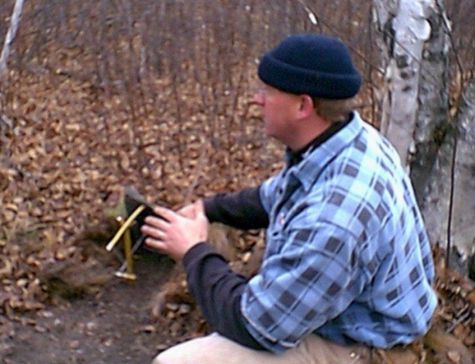
Trap and photo by
Allan "Bow" Beauchamp |
Here is an overview shot of a
paiute trap, showing overall positioning. |
|
|
|
|
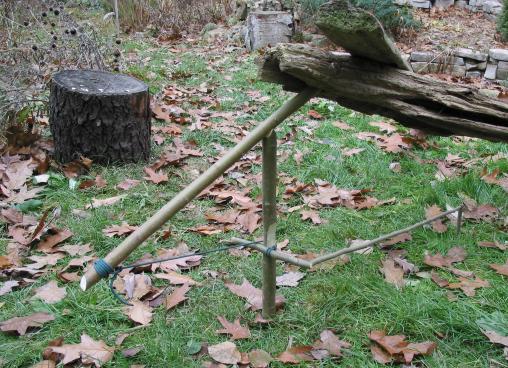
Trap constructed by
Rob Bicevskis
|
Here's a clear photo of a Paiute deadfall trap.
In this case the horizontal trigger stick is being held
in place by a small short stick that has been stuck in the ground.
Note the "V" point at the top of the vertical
stick, fitting into the notch on the underside of the diagonal stick. |
|
|
|
|
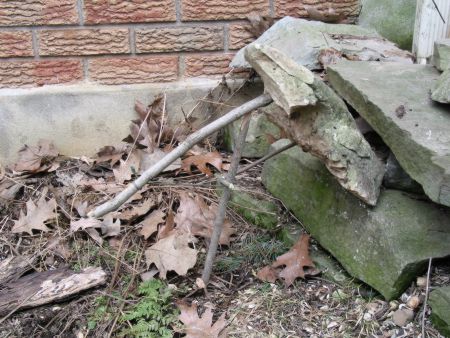
Trap constructed by Julie Liptak.
|
Another Paiute trap
|
|
|
|
|
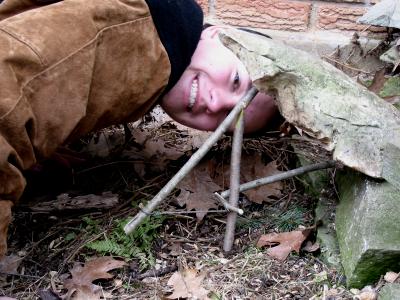
Trap constructed by Alex Harwood.
|
Watch yer nose!
This type requires a knife to cut a notch on
the diagonal stick and a point on the upright stick.
However, the string has less tendency to slip
upwards.
|
|
|
|
|
|
|
|
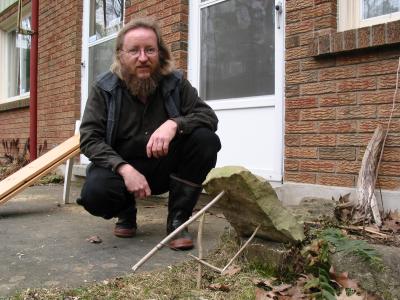
Trap constructed by Walter Muma.
|
|
The Paiute
deadfall trap is, in some respects, much easier to set than the Figure-4 deadfall.
|
|
|
|
Click on the small
photo to watch a movie of this trap being triggered |
|
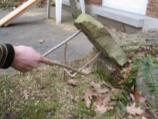
|
|
Windows Media format (WMV)
320x240, 223 KB |
|
|
|
|
|
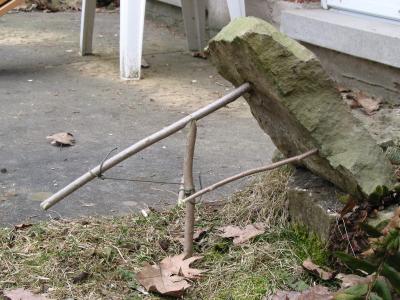
Trap constructed by Walter Muma. |
The one drawback of this
type of trap, in comparison with the Figure-4 deadfall, is that it
does require some cordage. However, the cordage
doesn't have to be very strong. Therefore some elementary cordage
could be whipped up from available plants without much trouble.
Note that this wouldn't necessarily be a very
practical trap as it is set up here -- this is just for
demonstration purposes.
Here, the deadfall rock is too high off the ground
to properly trap an animal. Usually the deadfall is positioned to
that it will fall flat onto another hard surface.
|
|
|
|
|
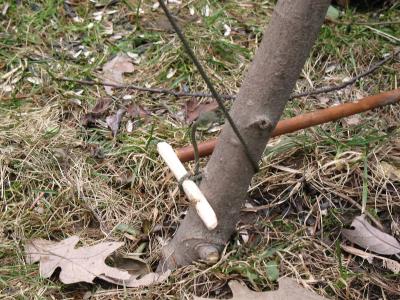
Trap constructed by Walter Muma.
|
Closeup view of the Paiute
trigger.
|
|
|
|
|
|
|
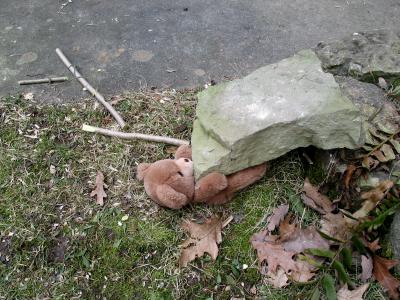
Trap constructed by Walter Muma.
|
It works: dinner! :)
|
|
|
|
|
|
|
|
Here is a variation in which the diagonal is supported by a
forked stick stuck vertically into the ground. In this case, you must be
careful that this vertical stick does not prevent the deadfall from
falling.
This form of the trap is unique in that it doesn't
require a knife, although it still requires cordage of some
sort.
Note that the horizontal stick is held in a
"V" at the top of the upright stick.
|
|
|
|
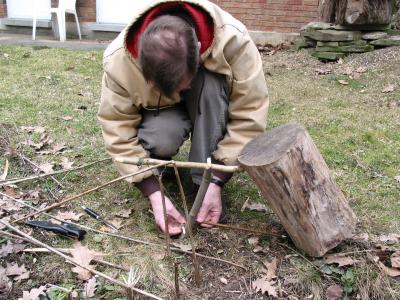
Trap constructed by Peter Linke.
|
|
Click on the small
photo to watch a movie of this trap being set
|
|
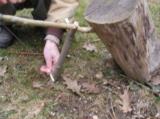 |
|
Windows Media format (WMV)
320x240, 1.5 MB |
|
Please note that this short movie does
not demonstrate the "proper" or
"perfect" way to set this trap!
Trap constructed by Peter Linke.
|
|
|
|
|
|
|
Here are 2 movies of this trap
being triggered
Click on the small
photo to watch the movie |
|
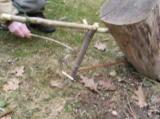 |
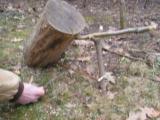
|
|
Windows Media format (WMV)
320x240, 198 KB |
Windows Media format (WMV)
320x240, 537 KB |
|
|
|
|
|
|
|
From the Primitive Skills Group (PSG) on the Internet (March 15, 2004)... |
|
|
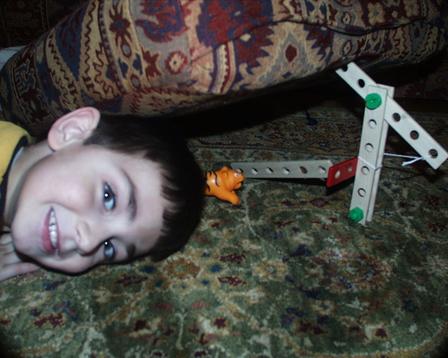 |
As you can see, it is entirely
possible to build a Piaute deadfall trigger entirely from tinker
toys.
Here's a young trapper in the foreground with the quarry
(modest sized Tiger) in the background approaching the trap... |
|
|
|
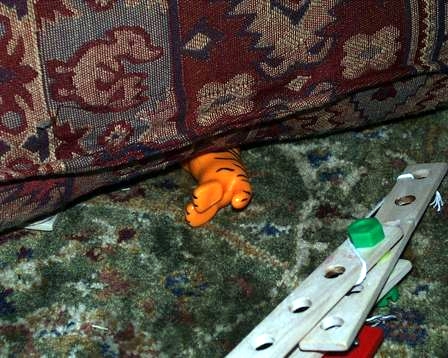 |
Got 'em! |
|
|
|